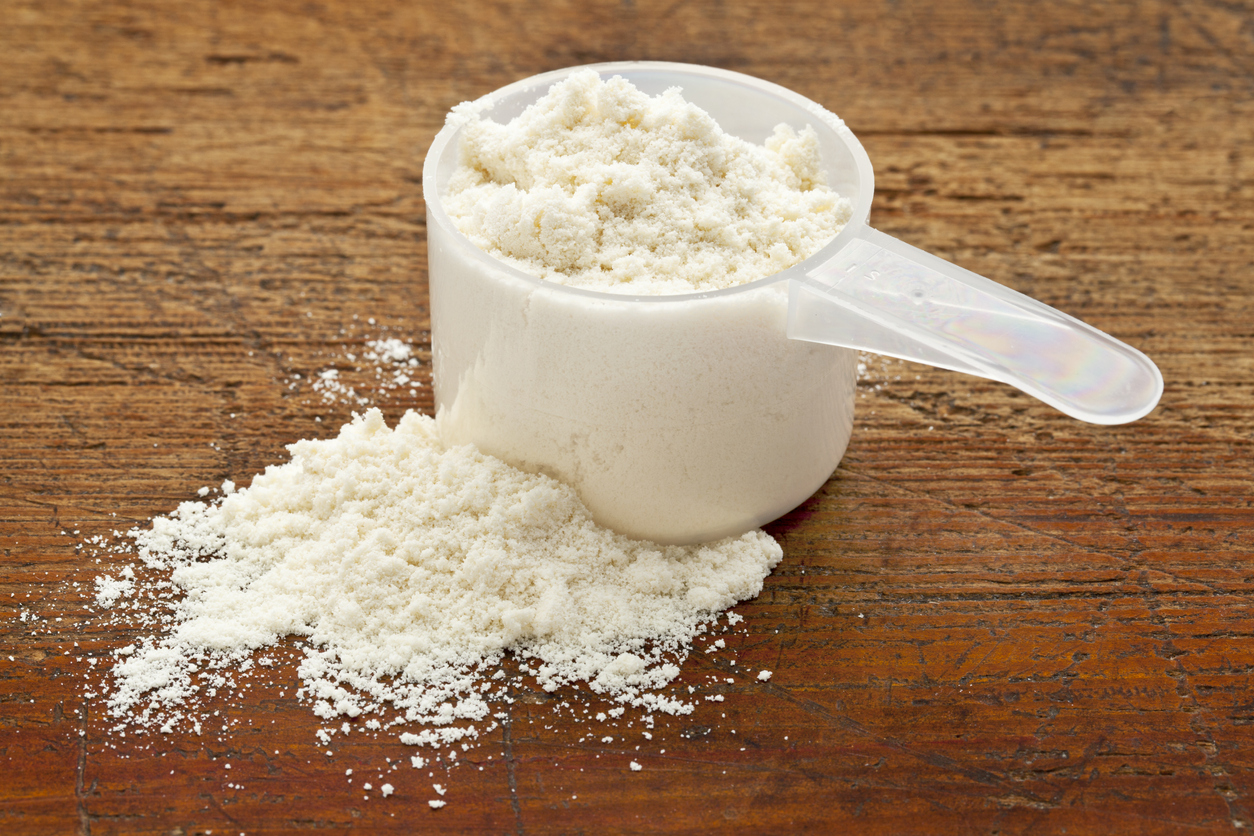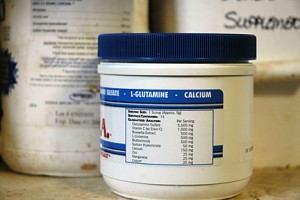Home > Horse Care > Three-step supplement shopping
Three-step supplement shopping
- March 5, 2024
- ⎯ Equus
Buying a supplement for your horse doesn’t seem complicated. Visit a store, open a catalog or browse the Internet for a few minutes, and you’ll find an array of options in a variety of price ranges, all ready to be sprinkled over your horse’s ration or dropped in his feed tub.

But, of course, there’s more to it than that. If you don’t do a bit of research beforehand, you might end up with the wrong supplement for your horse’s needs. That, at best, is a waste of money. At worst it could create nutritional imbalances that adversely affect your horse’s health. “Trial and error” may work for buying some things, but it isn’t the way to go when purchasing a feed supplement for your horse.
This doesn’t mean, however, that supplement shopping needs to make you feel anxious or overwhelmed. Proceed with confidence by breaking the process into three simple steps: Identify the need, educate yourself on ingredients and compare your options. Follow these steps, and you’ll end up with the best supplement for your horse and avoid wasting money or creating nutritional imbalances.
Step one: Clarify the need for supplements
There are a lot of good reasons to feed supplements and a few misguided ones. For example, it’s not wise to purchase a particular supplement for your horse just because someone else at the barn feeds it to her horse, who “looks great.” As valuable as testimonials from trusted friends can be, your horse—and his nutritional needs—are unique, and he may need something completely different than the horse in the stall across the aisle.
So start your supplement search by clarifying why you think your horse needs one and what you’re hoping the results will be. Is his hoof quality poor? Is he losing weight? Is he anxious most of the time? Do his joints seem increasingly stiff when you warm him up for a ride? Be as specific as you can. There are so many targeted supplements available today that you can’t really be too narrow in your intent. If you have trouble getting beyond wanting your horse to “look great” or “be healthier,” try brainstorming on a piece of paper exactly what that means to you. There are general multivitamin supplements available, but if you’re seeking a specific improvement in your horse’s health or performance, a targeted product will probably be a better choice.
Once you’ve identified the issue you want a supplement to address, consult with your veterinarian to determine if there is an underlying issue that might be at play. For instance, your horse’s dull coat might actually be a sign of illness that needs to be addressed medically instead of nutritionally. Or his fractious behavior might be due to excess energy in his regular ration. Your veterinarian might also have suggestions for measures you can take in addition to feeding a supplement. A horse with arthritis, for example, may do well on a joint supplement but even better when that supplement is combined with a well-conceived exercise program. If the problem is hoof-related, pull your farrier in on the conversation as well.
Once you’ve given this some thought and gathered information, you will be able to focus your shopping efforts on a specific category. Chances are it will be one of the five most common supplement categories: joint health, calming, digestive support, hoof growth or coat improvement.
Step two: Get a supplement ingredient education
Once you’ve identified the type of supplement your horse needs, you’ll find no shortage of options. In any category, however, most products will have some common ingredients. The next step in your supplement search is to learn more about these ingredients and how each product is formulated to help your horse.
Joint support: Many joint supplements feature glucosamine, a building block of cartilage production and repair. You’ll also find chondroitin sulfate, a protein molecule that is a constituent of connective tissues and cartilage, in many joint products. Hyaluronan, also called hyaluronic acid, is another ingredient commonly used to support joint health because it’s a key structure in synovial fluid, connective tissue and cartilage. The fibrous protein keratin may also be included.

Methylsulfonylmethane (MSM) is an organic compound necessary for the production of collagen that may also have anti-inflammatory properties. Avocado/soybean unsaponifiables (ASU) are increasingly popular in joint supplements because they are thought to prevent destruction of existing cartilage while stimulating tissue repair. Rounding out the ingredients most often found in joint supplements are herbal products with anti-inflammatory and joint-supporting action such as devil’s claw, yucca and grape seed extract.
Calming: Supplements intended to soothe fractious horses contain nutrients such as magnesium, which plays a role in normal muscle and nerve function, thiamine (B1), which helps convert carbohydrates to fat and supports the nervous system, and chromium, a mineral that helps regulate blood sugar. You may also find products that contain L-tryptophan, the amino acid that is a precursor to the neurotransmitter serotonin, and melatonin, the hormone that helps regulate circadian rhythms. Calming supplements may also contain herbal ingredients such as valerian, which has been used since the days of the ancient Greeks to treat restlessness and insomnia; chamomile, a traditional remedy for anxiety; and raspberry leaf, thought to regulate hormone fluctuations.
Digestive support: Supplements designed to optimize a horse’s gut function often contain probiotics, combinations of specific bacteria and yeasts that support beneficial intestinal flora. Prebiotics, sugars and nutrients that feed these bacteria, are also common ingredients. In addition, yeast cultures are often included in digestive supplements to assist in the activity of bacteria in the hindgut.
You may also notice alfalfa meal listed on the label, a source of highly digestible fiber; lecithin, a lipid thought to protect the lining of the stomach; and the amino acids glutamine, threonine and L-carnitine.
Hoof health: If your goal is to improve your horse’s hooves, the products at the top of your list will contain biotin, a B vitamin that has been shown in multiple studies to improve the quality of hoof horn by supporting the production of keratin. Also found in hoof supplements are the amino acids methionine, which has a similar keratin-supporting action, and lysine, which plays a role in the formation of collagen. The minerals zinc, copper and manganese are critical to the formation of hoof horn, and hoof and bone-building calcium is often supplied via calcium carbonate derived from eggshells and calcium pantothenate, a B vitamin.
Coat quality: Supplements formulated to improve the coat will often contain biotin along with pyridoxine, a B vitamin needed for the production of amino acids critical to hair growth. Other B vitamins are also sometimes added, including riboflavin and folic acid to improve hair production, along with flaxseed and fish oils, sources of omega-3 fatty acids. In addition, coat supplements may contain the amino acid lysine, which contributes to the formation of collagen and tissue growth and repair, as well as the amino acid methionine.
Step three: Select a supplement product
Once you’re familiar with the ingredients common in a supplement category, it’s time to select a specific product. The Food and Drug Administration does not regulate supplements as strictly as it does medications—the efficacy of supplements does not have to be proven—so you’ll need to be a savvy shopper to identify the products likely to be more worthwhile than others.

Start by inspecting the labels of potential purchases. Look for one that lists ingredients clearly, along with amounts of each. There is no requirement for supplements to display this information, but reputable companies will. Also look for a lot number, which allows companies to keep track of each batch; it’s a sign of quality control. Finally, look for a phone number. A reliable supplement manufacturer will make it easy for consumers to get their questions answered.
Also look for the National Animal Supplement Council (NASC) Seal of Quality. A nonprofit corporation, the NASC allows only manufacturers who meet certain standards to display the NASC Seal on their labels. Among the requirements are an independent quality audit, an adverse-event reporting system and labels that are consistent with the requirements for nutritional or health products.
The next step takes some work but is crucial: Compare the ingredients in the product you’ve selected to the nutritional makeup of the rest of your horse’s diet. This means collecting all his other supplements and the label off a bag of his feed and comparing the ingredients in each. You need to avoid overloading your horse with any one nutrient, which could be dangerous. In many products, grains are fortified with vitamins and other nutrients, so the chance of an overlap is significant and increases with each additional supplement in your horse’s diet. This is where multivitamin supplements can be helpful. Instead of feeding three separate products, which risks overloading on some nutrients, you may be able to find one product that covers all your nutritional bases safely. Your veterinarian or an equine nutritionist can offer you some guidance if you have a lot of variables to consider.
Finally, of course, price is a consideration. You don’t want to strain your budget with spending on supplements, but cheaper isn’t always better, especially if the product that saves you money lacks label information, a method to contact the manufacturer or any evidence of quality-control measures.
Most conscientious horse owners are savvy shoppers, ready to take on the multi-faceted process involved in purchasing the right supplement. It takes a bit of work, but the payoff comes when you’ve selected a product that perfectly rounds out your horse’s diet.
This article first appeared in EQUUS issue #443.
Don’t miss out! With the free weekly EQUUS newsletter, you’ll get the latest horse health information delivered right to your in basket! If you’re not already receiving the EQUUS newsletter, click here to sign up. It’s *free*!





